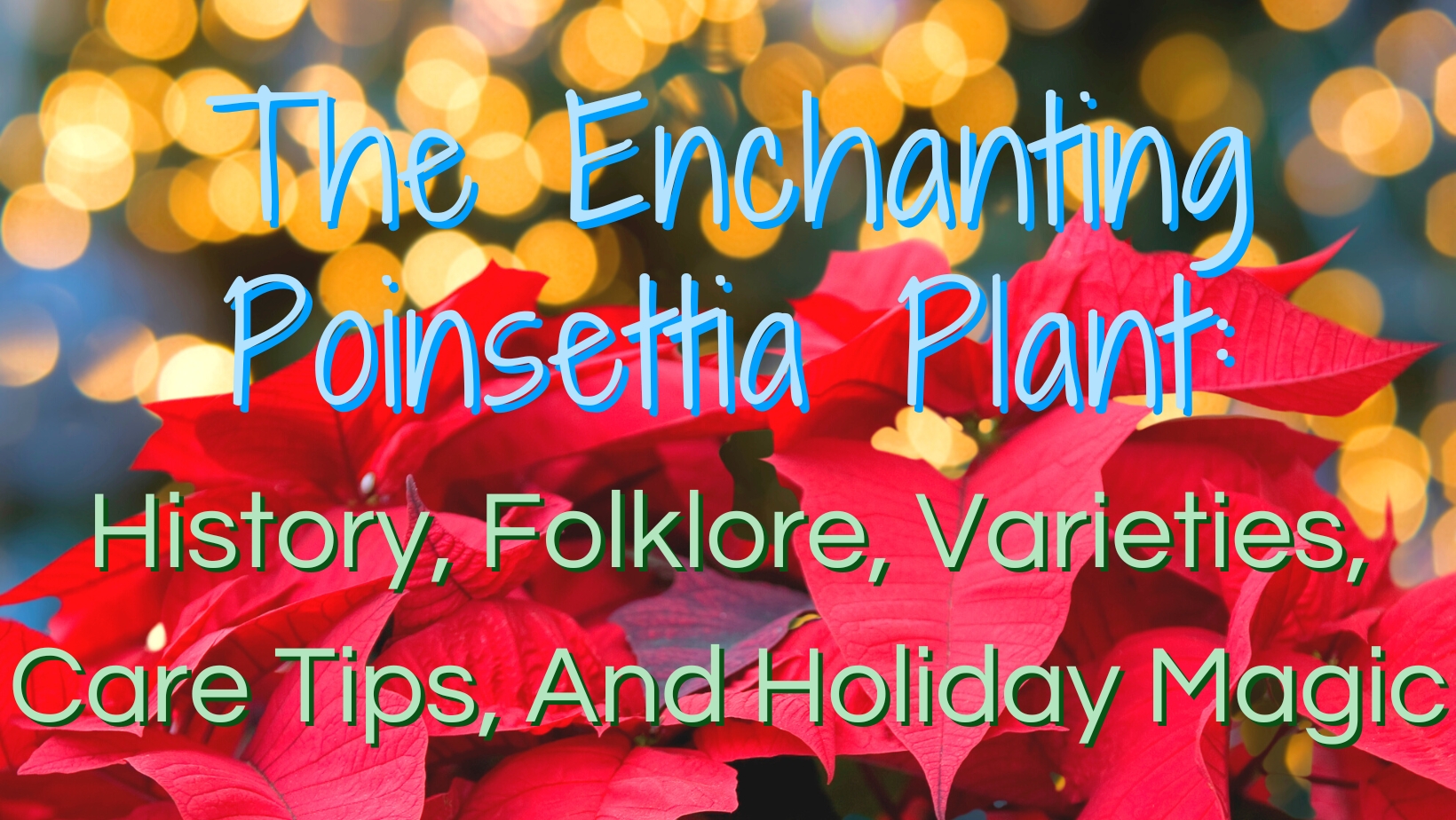As the holiday season approaches, there’s one vibrant and iconic plant that never fails to captivate our hearts – the Poinsettia! These stunning red, white, and green plants have a rich history in the United States, are steeped in folklore, and come in a variety of eye-catching forms.
Let’s explore the fascinating history of Poinsettia plants, delve into their folklore, introduce you to some specific varieties, and provide essential care instructions and tips to help you keep them thriving throughout the holiday season.

The History Of Poinsettia In The United States
Poinsettia plants (Euphorbia pulcherrima) have a long and colorful history in the United States. Their story begins with Joel Poinsett, a U.S. Ambassador to Mexico, in the early 19th century. In 1828, while visiting Mexico, Poinsett became enchanted by the vibrant red and green plants he discovered growing wild. He was so taken with these beauties that he brought them back to his South Carolina home. These are believed to be the first Poinsettias introduced to the United States, which is why the plant bears his name.
Poinsettias In Folklore
The Poinsettia has a special place in Mexican folklore as well. Legend has it that an angel inspired a poor child named Pepita to give a humble gift during a Christmas celebration. She purchased a plant in the village market and placed it in front of a church nativity scene. Miraculously, the plant transformed into beautiful red flowers – Poinsettias! This heartwarming tale is a reminder of Poinsettia’s association with the holiday season.

Popular Poinsettia Varieties
Poinsettias aren’t limited to the classic red variety. They come in a range of stunning colors and forms, making them versatile additions to your holiday décor. Here are some popular Poinsettia varieties:
Classic Red: The traditional choice, with vibrant red bracts (the colorful leaves that resemble petals).
White: Elegant and pure, white Poinsettias add a touch of sophistication to any setting.
Pink: Soft pink varieties offer a delightful and gentle alternative to the classic red.
Marbled and Speckled: These unique varieties feature patterns of marbled or speckled colors on their bracts, adding intrigue to your display.
Miniature: Perfect for tabletops, miniature Poinsettias come in various colors and make charming gifts.

Poinsettia Care Instructions And Tips
Now, let’s dive into the essential care instructions and tips to ensure your Poinsettia plants stay vibrant throughout the holiday season:
Light: Place your Poinsettia in a well-lit location with indirect sunlight. Avoid exposing them to drafts or sudden temperature changes.
Watering: Keep the soil consistently moist but not soggy. Allow the top inch of soil to dry out before watering again. Overwatering can lead to root rot, so be cautious. Remove the pot from the decorative foil liner before watering. Allow the pot to drain completely after watering before placing the pot back in the decorative foil.
Temperature: Poinsettias prefer temperatures between 65°F and 75°F (18°C – 24°C). Avoid extreme temperature fluctuations.
Humidity: Maintain a moderate level of humidity by misting the plant or placing it on a tray with water and pebbles.
Fertilization: Apply a balanced, water-soluble fertilizer every 2-4 weeks during the growing season (spring to early autumn).
Pruning: Trim the plant after the holiday season to encourage bushier growth. Cut back the stems to 6-8 inches.
Protection: Shield your Poinsettia from cold drafts when transporting them outdoors.
Toxicity: Be aware that Poinsettias are mildly toxic to pets and children. Keep them out of reach.
Poinsettia plants have a captivating history, deep-rooted folklore, and an array of enchanting varieties that make them a beloved part of holiday traditions. With the right care and attention, your Poinsettias can continue to thrive, spreading festive cheer and adding a touch of holiday magic to your home. So, embrace the beauty of Poinsettias this holiday season and make them a cherished part of your celebrations!

Did you know that you can keep poinsettia as a houseplant and return it to its colorful display each holiday? Here are some tips for doing that.
Growing Poinsettias for the holiday season requires careful timing. These plants are photoperiodic, which means they need specific light conditions to trigger their color change. To ensure your Poinsettias are in full bloom for the holidays, you’ll need to provide them with extended darkness for about 8-10 weeks starting in early October. Cover them with a light-proof bag or place them in a dark closet each evening, and return them to bright, indirect sunlight during the day.

The Right Growing Medium
Poinsettias thrive in well-draining, slightly acidic soil with a pH level of 5.5 to 6.5. Choose a high-quality potting mix designed for ornamental plants. Make sure your containers have proper drainage to prevent waterlogged roots.
Temperature and Humidity
Maintaining the right temperature and humidity levels is crucial for Poinsettia cultivation:
Temperature: During the day, keep your Poinsettias in a warm spot with temperatures around 65-75°F (18-24°C). They prefer slightly cooler conditions at night, around 60-65°F (15-18°C).
Humidity: Poinsettias thrive in a moderately humid environment. You can achieve this by misting the plants regularly or placing a tray of water with pebbles nearby.
Watering and Fertilization
Proper watering and fertilization are key to a healthy and long-lived Poinsettia:
Watering: Keep the soil consistently moist but not soggy. Allow the top inch of soil to dry out before watering again. Be cautious not to let your Poinsettia sit in standing water.
Fertilization: Use a balanced, water-soluble fertilizer every 2-4 weeks during the growing season (spring to early autumn). Reduce or cease fertilization during the dormant season.

Pruning and Pinching
To encourage bushy growth and abundant bracts (the colored leaves that resemble petals), regularly pinch back the growing tips of your Poinsettias. Start this process in late spring or early summer and continue until late August.


Leave a Comment
You must be logged in to post a comment.